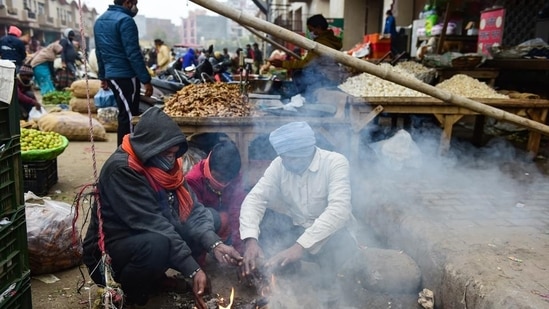‘Fog hole’ brings sun out but cold persists
While Safdarjung, Delhi’s base station, recorded a maximum temperature of 17.2 degrees Celsius (°C) on Sunday, three notches below normal, some parts of the city still recorded ‘cold day’ conditions, with the mercury increasing only marginally, to 12.8°C, at outer Delhi’s Narela.
Parts of the national capital recorded ‘cold day’ conditions on Sunday, despite a ‘fog hole’ over the city allowing in some sunlight and pushing up the maximum temperature from the season’s lowest, recorded a day ago.

While Safdarjung, Delhi’s base station, recorded a maximum temperature of 17.2 degrees Celsius (°C) on Sunday, three notches below normal, some parts of the city still recorded ‘cold day’ conditions, with the mercury increasing only marginally, to 12.8°C, at outer Delhi’s Narela.
Though officially Delhi witnessed ‘cold day’ only on Friday and Saturday, parts of the Capital recorded such conditions for the fourth consecutive day on Sunday.
Narela was Delhi’s coldest location on Sunday, followed by Jafarpur (13.5°C) and Mayur Vihar (14.3°C). The minimum temperature in the Capital rose to 8.1°C, a degree above normal, from 6.1°C a day ago.
According to the India Meteorological Department (IMD), a ‘cold day’ is declared when the minimum temperature is less than or equal to 10°C and the maximum temperature is at least 4.5°C below the normal.
The Capital recorded its lowest maximum temperature for two years on Saturday, when the daytime mercury dipped to 14.8°C at Safdarjung and 10.7°C at Narela.
IMD senior scientist RK Jenamani said both the Safdarjung and Palam stations recorded shallow fog on Sunday. The IMD had issued an Orange alert for Sunday, forecasting both dense fog and cold day conditions.
“This is the fourth consecutive day in Delhi now where cold day conditions have been seen. Some parts saw sunlight due to a clearance occurring in the low clouds due to winds,” said Jenamani.
Navdeep Dahiya, an amateur weatherman who runs ‘Live Weather of India’, said satellite imagery showed dense fog and low clouds looming over the entire northern plains, but a fog hole led to some relief in parts of Delhi.
“Fog holes are generally observed over urban cities and are linked to emissions. These are rarely seen in open settings such as fields,” he said.
Jenamani said that cold day conditions were expected at isolated parts of Delhi on Monday as well.
“The visibility was around 800 metres at Palam between 7.30am and 9.30am. It was around 600-700 metres at Safdarjung, but shallow fog was recorded at both locations. We can expect moderate fog on Monday, with similar low clouds to persist,” he added.
The IMD classifies fog as ‘shallow’ when the visibility is between 500 and 1,000 metres, as ‘moderate’ when it is between 200 and 500 metres, and ‘dense’ when it is below 200 metres.
IMD has forecast that the mercury will hover between 8°C and 16°C on Monday.
Delhi’s air quality meanwhile remained in the ‘poor’ category, with an air quality index (AQI) of 264 recorded as per Central Pollution Control Board’s 4pm bulletin – a slight increase from Saturday’s reading of 258.
According to the System of Air Quality and Weather Forecasting And Research (Safar), a government forecasting body, Delhi’s air quality is likely to remain in the ‘poor’ category over the next two days, with further deterioration expected from January 19, as wind speed drops.
“Prevailing foggy conditions and a gradual increase in wind speed is likely to keep air quality in the ‘poor’ category for the next two days. From (January) 19th onwards, wind speed is likely to decrease, leading to low ventilation of pollutants,” said the Safar forecast.






